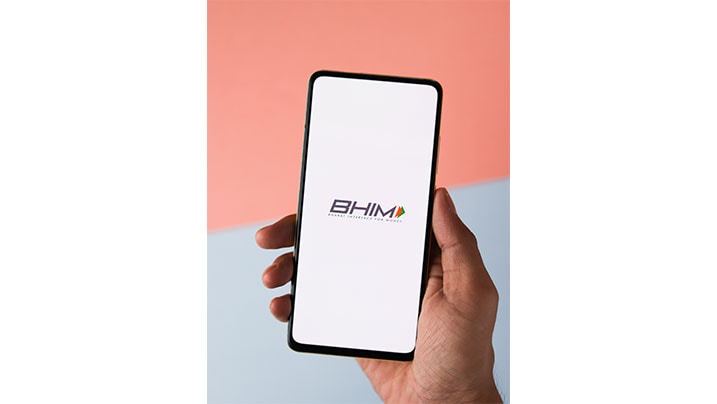CKYC Registry
-
Customer Service Contact us Service request Locate a branch
Find all the help you need
Scan the QR, get our app, and find help on your fingertips

Help CenterSupport topics, Contact us, FAQs and more
-
Login
Are you ready for an upgrade?
Login to the new experience with best features and services
-
Login
Are you ready for an upgrade?
Login to the new experience with best features and services
- Accounts
-
Deposits
IDFC FIRST Bank Deposits
View all Deposits -
Loans
IDFC FIRST Bank Loans
View all Loans - Wealth & Insure
-
Payments
IDFC FIRST Bank Payments
View all Payments -
Cards
IDFC FIRST Bank Cards
View all Cards - Blogs
- Corporate Account
-
Cash Management Services
IDFC FIRST Bank Cash Management Services
View all Cash Management Services - Supply Chain Finance
-
Corporate Lending
IDFC FIRST Bank Lending
View all -
Treasury
IDFC FIRST Bank Treasury
See more details - NBFC Financing
Support topics, Contact us, FAQs and more
- IDFC FIRST Bank Accounts
-
Savings Account
-
Corporate Salary
Account -
Senior Citizens
Savings Account -
First Power
Account -
Current Account
-
NRI Savings
Account -
TASC Institutional
Account -
Savings Account
Interest Calculator
- IDFC FIRST Bank Deposits
-
Fixed Deposit
-
Recurring Deposit
-
NRI Fixed Deposit
-
Safe Deposit Locker
-
FD Calculator
-
RD Calculator
- IDFC FIRST Bank Loans
-
Personal Loan
-
Consumer Durable
Loan -
Home Loan
-
Business Loan
-
Professional Loan
-
Education Loan
-
New Car Loan
-
Pre-owned Car Loan
-
Two Wheeler Loan
-
Pre-owned Two
Wheeler Loan -
Commercial Vehicle
Loan -
Gold Loan
-
Loan Against Property
-
Loan Against Securities
-
Easy Buy EMI card
-
Personal Loan
EMI Calculator -
Education Loan
EMI Calculator -
Home Loan
EMI Calculator
- IDFC FIRST Bank Wealth & Insure
-
FIRST Select
-
FIRST Wealth
-
FIRST Private
-
Mutual Funds
-
Sovereign Gold Bond
-
Demat Account
-
Term Insurance
-
Life Insurance
-
Health Insurance
-
General Insurance
-
Bonds
-
Loan Against
Securities -
Portfolio Management
Service
- IDFC FIRST Bank Payments
-
FASTag
-
Credit Card
Bill Payments -
UPI
-
Funds Transfer
-
Forex Services
-
Pay Loan EMI
- IDFC FIRST Bank Cards
-
Ashva :
Metal Credit Card -
Mayura :
Metal Credit Card -
FIRST Millennia
Credit Card -
FIRST Classic
Credit Card -
FIRST Select
Credit Card -
FIRST Wealth
Credit Card -
FIRST WOW!
Credit Card -
Deals
-
Debit Cards
-
Co-branded Cards
-
Credit Card
EMI Calculator -
FIRST Corporate
Credit Card -
FIRST Purchase
Credit Card -
FIRST Business
Credit Card
- Premium Metal Credit Cards
-
AshvaLifestyle1% Forex₹2,999
-
MayuraLifestyleZero Forex₹5,999
-
FIRST PrivateInvite Only
- Best for travellers
-
MayuraZero ForexMetal₹5,999
-
Ashva1% ForexMetal₹2,999
-
FIRST WOW!Zero ForexTravelLifetime Free
-
FIRST SWYPTravel OffersEMI₹499
-
FIRST Select1.99% ForexLifestyleLifetime Free
-
FIRST Wealth1.5% ForexLifestyleLifetime Free
-
Club VistaraTravelLifestyle₹4,999
-
IndiGo IDFC FIRST Dual Credit CardTravelLifestyle₹4,999
- Max benefits, Free for life
-
FIRST Classic10X RewardsShoppingNever Expiring Rewards
-
FIRST Millennia10X RewardsShoppingNever Expiring Rewards
-
FIRST Select10X RewardsLifestyle1.99% Forex
-
FIRST Wealth10X RewardsLifestyle1.5% Forex
-
FIRST WOW!RewardsTravelZero Forex
-
LIC ClassicRewardsInsuranceShopping
-
LIC SelectRewardsInsuranceShopping
- Reward Multipliers
-
AshvaLifestyleMetal₹2,999
-
MayuraLifestyleZero Forex₹5,999
-
FIRST ClassicNever Expiring RewardsShoppingLifetime Free
-
FIRST MillenniaNever Expiring RewardsShoppingLifetime Free
-
FIRST SelectNever Expiring RewardsLifestyleLifetime Free
-
FIRST WealthNever Expiring RewardsLifestyleLifetime Free
- Rewards & Credit on UPI
-
FIRST Power+FuelUPI₹499
-
FIRST PowerFuelUPI₹199
-
FIRST EA₹NVirtual1% Cashback₹499
-
FIRST DigitalVirtualUPI₹199
-
IndiGo IDFC FIRST Dual Credit CardUPITravelDual cards
- Fuel and Savings
-
FIRST PowerRewardsUPI₹199
-
FIRST Power+RewardsUPI₹499
-
LIC ClassicRewardsInsuranceShopping
-
LIC SelectRewardsInsuranceShopping
- Express and Flaunt
-
AshvaMetal1% Forex₹2,999
-
MayuraMetalZero Forex₹5,999
-
FIRST SWYPEMIOfferMAX₹499
-
FIRST MillenniaRewardsShoppingLifetime Free
- FD Backed rewarding Credit Cards for all
-
FIRST EA₹NVirtualCashback₹499
-
FIRST WOW!Zero ForexTravelLifetime Free
-
CreditPro Balance TransferTransfer & SaveReduce InterestPay Smartly
- IDFC FIRST Bank NRI Forex Solutions
-
Send money to India-Wire transfer
-
Send money to India-Digitally
-
Send money abroad
-
Max Returns FD (INR)
- IDFC FIRST Bank MSME Accounts
-
Platinum Current
Account -
Gold
Current Account -
Silver Plus
Current Account -
Merchant Multiplier
Account -
Agri Multiplier
Account -
TASC Institutional
Account -
Dynamic Current
Account -
World business
Account -
First Startup
Current Account
- IDFC FIRST Bank Business Loans
-
Business Loan
-
Professional Loan
-
Loan Against Property
-
Business Loan for Women
-
Working Capital Loan
-
Construction Equipment Loan
-
Machinery Loan
-
Healthcare Equipment Loan
- IDFC FIRST Bank Business Solutions
-
Payment Solutions
-
Tax Payments
-
Doorstep Banking
-
Point of Sale (POS)
-
Escrow Accounts
-
NACH
-
Payment Gateway
-
UPI
-
Virtual Accounts
-
As per amendment in the Income Tax Rules, PAN or Aadhaar are to be mandatorily quoted for cash deposit or withdrawal aggregating to Rupees twenty lakhs or more in a FY. Please update your PAN or Aadhaar. Kindly reach out to the Bank’s contact center on 1800 10 888 or visit the nearest IDFC FIRST Bank branch for further queries.
-
-
Most Searched
Sorry!
We couldn’t find ‘’ in our website
Here is what you can do :
- Try checking the spelling and search
- Search from below suggestions instead
- Widen your search & try a more generic keyword
Suggested
Get a Credit Card
Enjoy Zero Charges on All Commonly Used Savings Account Services
Open Account Now
In the dynamic landscape of digital finance, the Virtual Payment Address, or VPA, has emerged as a game-changer. VPA offers a seamless, secure, and simplified way to transact in the modern era. It has revolutionised the digital fund transfer facility by providing a unique identifier that serves as the identity of the payer and the receiver during online money transfers.
VPA stands for virtual payment address. It is like an email address. When you want to send someone an email, you ask for their email address. Similarly, you will need a VPA address when you want to send payments to the beneficiary without remembering their account number or IFSC code. Let us understand what a virtual payment address is, its benefits, and how it works.
What does a Virtual Payment Address mean in UPI?
A few years back, having the beneficiary's account number, IFSC code, etc., was necessary to send money. However, the Unified Payments Interface (UPI) changed that, allowing you to send anyone money instantly without entering the beneficiary's account details.
Instead of typing in the bank account details, you can enter their VPA, and the funds will be credited instantly without transaction charges. It also makes it easier for merchants to collect payments from their customers online.
READ MORE
How VPA works?
Here is a detailed guide on how the Virtual Payment Address works.
VPA creation
To create a VPA in UPI, you first need to download a UPI-enabled banking app. Within the app, select the option to create a VPA. You can choose a unique username, which will become your VPA (e.g.,yourname@bankname). After verifying your identity and linking your bank account, your VPA is generated, allowing you to send and receive funds securely.
Linking bank account
To link your bank account, provide the necessary details such as account number and mobile number. The app will verify your information and associate your chosen VPA with your bank account, ensuring a seamless connection for transactions.
Transaction process
Initiating a transaction involves entering the recipient's VPA instead of account details. The UPI system uses this VPA to identify the recipient's bank account securely. You can then specify the amount and purpose of the transaction before confirming it with a UPI PIN for authentication.
Fund transfer
Once the transaction is confirmed, funds are securely transferred between the linked bank accounts. The recipient's bank receives the request, validates it, and processes the transfer. As you can see, there is no need to enter the bank account details of either you or the recipient to make transfers. This method ensures privacy, convenience, and swift fund transfers, making UPI with VPA a preferred choice for digital payments in India .
How to get a VPA for your bank account?
Creating a VPA for your bank account is easy. First, you need to visit your preferred UPI app. For instance, if you are an IDFC FIRST Bank customer, open the IDFC FIRST Bank mobile banking app. Once you have opened the app, click on the Create VPA option and follow the outlined steps. Keep your debit card details handy as you will need them during the process.
Also, remember that you can only register for UPI with the number you have linked with the bank.
Why should you get a Virtual Payment Address?
A VPA is essential for the following reasons.
- You can instantly send and receive money anytime, even on bank holidays. It is a unique feature that sets UPI apart from the other transaction methods in the country.
- You do not need to add any beneficiary and wait for it to get approved. You can send money directly to any VPA address.
- You do not need to remember anyone's bank account number or IFSC code. VPA makes money transfers quick and straightforward.
Benefits of VPA
VPA offers numerous benefits, revolutionising the way people conduct digital transactions in India:
Simplified transactions:|
VPAs simplify the payment process by eliminating the need to remember complex bank account numbers and IFSC codes. You can make payments using a simple and memorable VPA, which is usually the receiver’s mobile number, reducing the chances of errors during transfers.
Enhanced privacy:
VPAs protect your sensitive bank account information. When you share your VPA for transactions, your actual bank account details remain confidential, reducing the risk of fraud or misuse.
Interoperability:
VPAs are not restricted to a single bank or payment service. They work across various banks and UPI-enabled apps, promoting interoperability and allowing users to choose their preferred banking provider.
Instant fund transfer:
With VPAs, funds are transferred instantly, facilitating quicker payments and settlements. This speed is crucial for businesses that rely on timely transactions.
Convenient for e-commerce:
VPAs make it easy to shop online thanks to its hassle-free and secure payment mechanism. They streamline the checkout process, enhancing the overall online shopping experience.
Reduced costs:
Traditional banking transactions often involve fees and charges. VPAs, being a part of the UPI system, typically have lower transaction costs, making them a cost-effective choice for both businesses and individuals.
How to send money to a VPA account?
Follow the below steps to send money to a VPA account.
- Open your preferred UPI app.
- Select the send money option.
- Enter the beneficiary's VPA. Alternatively, if your beneficiary is registered with the same UPI app, you can enter their mobile number.
- You will be asked to enter your UPI ID in the next step. Enter the same and confirm.
- If the transaction is successful, the money will instantly reach the beneficiary's bank account.
However, if the transaction fails, you contact the bank for assistance. In most cases, the money is refunded back to your account.
Disadvantages of UPI
UPI offers many features but sending and receiving money through UPI also has some drawbacks. Here are two of its common issues.
- There are transaction limits for UPI. You can only send up to ₹1 lakh per day, which is not ideal for businesses dealing in big transactions.
- If the bank's UPI system is down, your payment can get stuck, and you might need to wait for up to 48 hours to get your refund.
However, despite its shortcomings, UPI remains the most convenient option to send and receive money, with VPA being the best option for sharing your bank account details.
Frequently Asked Questions
What is a VPA, and how does it work in UPI?
A VPA is a unique identifier that replaces traditional bank account numbers in UPI payments. It acts as an alias for your bank account, simplifying transactions. When you initiate a UPI payment, you enter the recipient's VPA instead of their bank details, and the system securely facilitates the transfer.
2. Can I have multiple VPAs linked to the same bank account?
Yes, you can link multiple VPAs to a single bank account. This is useful for segregating personal and business transactions or for added privacy.
3. Is it necessary to have a smartphone to use a VPA in UPI?
Yes, a smartphone with a UPI-enabled banking app is required to create and use a VPA. However, you can receive funds into your VPA even if you don't have a smartphone.
4. Can I change my VPA after creating it?
Most UPI apps allow you to change your VPA, but it might involve a verification process. Be sure to check with your specific banking app for the procedure.
5. Are VPAs secure for transactions?
Yes, VPAs are secure. They mask your actual bank account details during transactions, enhancing privacy. Additionally, UPI employs robust security measures, including multi-factor authentication, to safeguard your transactions.
Disclaimer
The contents of this article/infographic/picture/video are meant solely for information purposes. The contents are generic in nature and for informational purposes only. It is not a substitute for specific advice in your own circumstances. The information is subject to updation, completion, revision, verification and amendment and the same may change materially. The information is not intended for distribution or use by any person in any jurisdiction where such distribution or use would be contrary to law or regulation or would subject IDFC FIRST Bank or its affiliates to any licensing or registration requirements. IDFC FIRST Bank shall not be responsible for any direct/indirect loss or liability incurred by the reader for taking any financial decisions based on the contents and information mentioned. Please consult your financial advisor before making any financial decision.
The features, benefits and offers mentioned in the article are applicable as on the day of publication of this blog and is subject to change without notice. The contents herein are also subject to other product specific terms and conditions and any third party terms and conditions, as applicable. Please refer our website www.idfcfirstbank.com for latest updates.






















